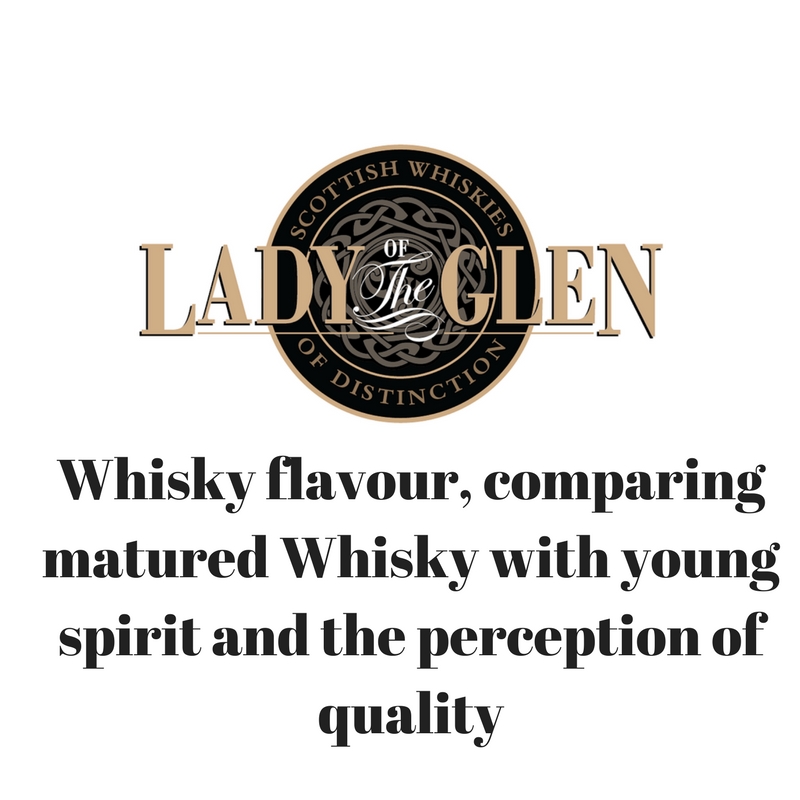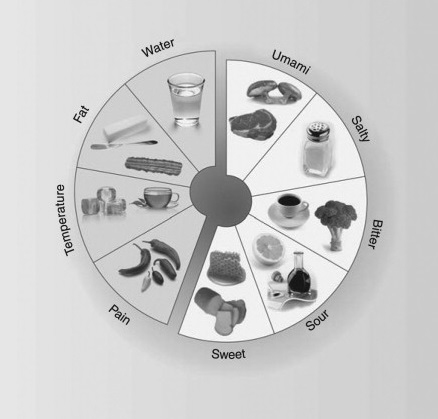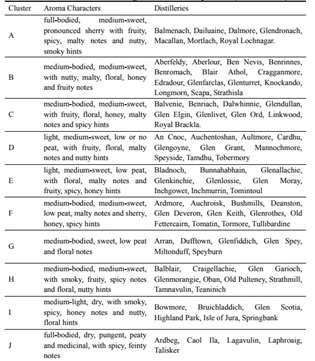Whisky Flavour Comparing Matured Whisky With Young Spirit And The Perception Of Quality Part 1

This part 1 of 2 part piece on the development of Whisky flavour
Producers and customers will wait years for Whisky to be ‘ready’. For many it is an assumption that the older the Whisky then the better quality it is. How quality is understood with Whisky has a lot to do with flavour. To understand a Whisky’s quality through flavour it is essential to know how flavour is recognized through the senses and how it is measured through various sensory analysis. An evaluation of the key stage of maturation can then be made in an attempt to garner an understanding of how Whisky gets better with age?
Contents
1. Introduction
2. Flavour
2.1 Taste
2.2 Smell
2.3 Texture
2.4 Appearance
1.Introduction
A single malt 70cl Glenfiddich 50 year old Whisky costs £22,850.00 (with free delivery) while a 70cl 12 year old Glenfiddich costs only £32.33 (delivery not included), Master of Malt (UK)(Malt, 2017a, Malt, 2017b). What separates these Whiskies on paper is 38 years of maturation and £22,817.67 but ignoring market value derived from the rarity and marketing it is important to know the purpose of maturation and what it can do to improve a Whisky’s quality. Whisky quality can be interpreted in a variety of ways using traditional and modern forms of measurement. With a grasp of how to measure quality, it then becomes essential to understand where the desirable and undesirable aromas are coming from. Finally, with a context of measurement and a knowledge of the desired aromas it is possible to evaluate the role of maturation.
2. Flavour
To develop an understanding of Whisky quality it is necessary to explore flavour to identify those flavours desired and not desired. Flavour is the culmination of different influences from senses including taste, appearance, smell and texture(Bredie & Møller, 2011). It’s complex, with differences in flavour due to variations in product composition derived from differences in raw material and production methods (Tao, 2016, Yoshida, Ishikawa et al., 2012).
2.1 Taste
Taste and gustation is fundamentally split into five basic properties sucrose (sweet), quinine (bitter), sodium chloride (salty), citric acid (sour) and monosodium glutamate (umami) (Bredie & Møller, 2011). These five tastes exist because not one can be created with a combination of the other four. In addition there is growing research that fat should be classed as a taste (Crystal & Teff, 2006), research has shown that when restrained eaters taste fat it increases their desire for food intake, while increasing vagal efferent activity which is associated with diminished heart rate, in comparison to non-fatty foods (Crystal & Teff, 2006). Water too has been included in the taste category because of the way nerve fibres respond to water applied to the tongue (Bredie & Møller, 2011). Pain and the sense of temperature have been placed in the taste category due to certain flavours being found to target the nociceptors present on the lips and in the mouth(Mandadi & Roufogalis, 2008).

Figure 1. the five basic taste qualities (sweet, sour, bitter, salty and umami) with other properties that are also believed to be important for the overall taste quality of foods and beverages (Bredie & Møller, 2011)
2.2 Smell
The value of the sense of smell was highlighted by Bredie & Møller (2011) “[Smell allows for] an almost infinite number of ‘tastes’ the different possible tastes increases enormously from the five dimensions that the sense of taste provides on its own”. However, it should be noted the aroma for whisky is defined as a combination of mouthfeel, taste and odour/smell (Tao, 2016).
Whisky has a particularly strong relationship with aroma, enjoying a complex mixture of hundreds of aroma compounds(Nykänen & Suomalainen, 1983) developed through the raw materials used and a variety of production methods adopted (Tao, 2016). (Tao, 2016) suggested that ‘the aroma and aroma compounds give the spirit its typical odour and taste’ which places great emphasis on the role of aroma. However, on its own smell is not enough; concerns were found at quality control level where experts would evaluate alcohol on nosing alone rather than tasting but tasting the sample would release flavors or heighten certain flavors undetected in nosing (McGrew & Chambers, 2011). Despite this, the sense of aroma has been described as the most important sensory category (Jack, 2011).
Table 1, illustrates the incredible variety of aromas found in the Scotch Whisky industry in what was an attempt to categorize distilleries based on twelve standard aromas (body, sweetness, smoky, medicinal, tobacco, honey, spicy, winey, nutty, malty, fruity and floral) Judging was based on a benchmark release from each distillery (Wishart, 2006). This work to classify Whisky by aroma is indicative of how valuable aroma is as it represents an attempt to classify Whisky away from traditional categorizations such as regional location which has become more blurred whereas aroma traits are distinct (Tao, 2016).
Table 1.1 Classification of single malt whiskies by aroma (Wishart 2006)

The table grouped together Whisky distilleries into 10 categories based on common aromas that they shared based on benchmark examples of Whisky from the distillery.
2.3 Texture
With Whisky texture is described as mouthfeel and here temperature has a role to play too. Tastes like sucrose (sweetness) are more easily detected between 25–35 °C and research into this relatively limited field found that higher temperatures can increase umami sensitivity while cooling to 10°C increased the salty taste(Green et al., 2016). This is of importance to tasting panels as the environment of the tasting could alter the taster’s assessment.
2.4 Appearance
Although it has been suggested that the chemical senses, taste, smell and chemesthesis (pain, touch and temperature) are the most significant of all the senses(Bredie & Møller, 2011), appearance still has a value. Particularly with whisky, as evidenced by the 50 year old Glendiffich’s deluxe packaging which is typical of the increased marketing of older whisky to create a more deluxe looking Whisky. Colour in food is assumed to give a reflection of taste(Small & Prescott, 2005) which makes the appearance of a whisky very important; dark whiskies give the impression of having been matured for a longer time (Conner, Reid et al., 2003) and therefore containing more desirable flavours. However, this has led to the use of Cobalt blue glasses in tastings to reduce prejudice(McGrew & Chambers, 2011) to hiding the colour when sampling. Short stemmed glasses with bulbous bodies are used for quality control but there is no scientific research to demonstrate improved flavour detection using this type of glassware (McGrew & Chambers, 2011). It should be noted that artificial colouring is used in blends and single malts to create an impression of greater maturation, which is indicative of the value of colour to a Whisky.
The next article will explore sensory and production methods with the flavours that are created.
Written by Gregor Hannah
Director of Hannah Whisky Merchants ltd